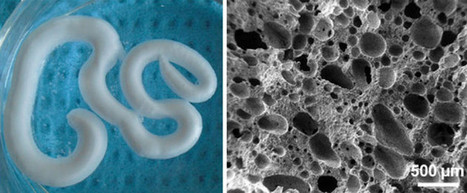Researchers in France have developed a self-setting foam that can repair defects in bones and assist growth. Eventually, this advanced biomaterial could be used to quickly regenerate bone growth and treat degenerative diseases such as osteoporosis.
Research and publish the best content.
Get Started for FREE
Sign up with Facebook Sign up with X
I don't have a Facebook or a X account
Already have an account: Login
Everything from new developments and discoveries in the Technology world: science, ICT, medicine, pharma...
Curated by
Gust MEES
 Your new post is loading... Your new post is loading...
 Your new post is loading... Your new post is loading...
|

Gust MEES's curator insight,
February 20, 2013 9:43 AM
The UDE researchers expect that the paste will have a long-lasting effect since the nanoparticles are released successively and thus continuously stimulate the surrounding cells. They have demonstrated that the paste works in three different cell types. Further tests now have to be conducted. Epple and his co-researchers hope that “our development will be used several years from now in the field of traumatology and in the treatment of osteoporosis.” |











Researchers in France have developed a self-setting foam that can repair defects in bones and assist growth. Eventually, this advanced biomaterial could be used to quickly regenerate bone growth and treat degenerative diseases such as osteoporosis.